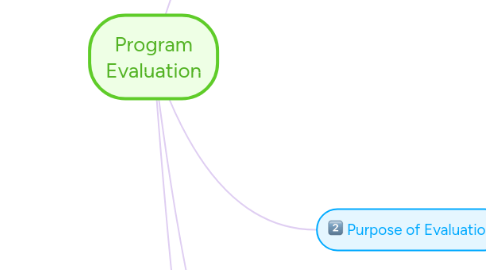
1. Purpose of Evaluation
1.1. Client Satisfaction (Clinical facilities)
1.1.1. Determine Frequency of Meetings
1.1.2. Schedule Meetings
1.1.3. Brief Project Board
1.1.4. Prepare Meetings
1.1.5. Conduct Meetings
1.1.6. Follow-up Meeting
1.2. Quality Control of Program
1.2.1. Schedule Quality Review Meeting
1.2.2. Prepare for Quality Review Meeting
1.2.3. Conduct Quality Review Meeting
1.2.4. Follow-up Quality Review Meeting
1.3. Foster Spirit of Education within the O.R.
1.3.1. Update Project Schedule
1.3.2. Update Budget / Costs
1.3.3. Conduct Team Status Review
1.3.4. Create Status Report
1.4. Facilitate Professional Development Opportunities for Staff
1.4.1. Request Changes
1.4.2. Identify Alternative Solutions
1.4.3. Conduct Steering Committee Meeting
1.4.4. Document Change Responses
1.4.5. Implement Change(s)
1.5. Deficiency Management
1.5.1. Identify Program Issues
1.5.2. Assess Impact of Issues
1.5.3. Assign Resources
1.5.4. Resolve Issue
1.6. End of the TC Program Clinical Rotation Assessment
1.6.1. Determine Next Stage Tasks
1.6.2. Determine Task Dependencies
1.6.3. Estimate Effort
1.6.4. Allocate Resources
1.6.5. Prepare Next Stage Schedule
1.6.6. Update Project Schedule
1.6.7. Review Project Organization
1.6.8. Compile Stage Closure Report
2. Evaluation Types
2.1. Preceptor Survey
2.1.1. Prepare Product Evaluation
2.1.2. Conduct Product Evaluation
2.1.3. Initiate Maintenance Process
2.2. Program Surveys (graduate and employer surveys)
2.2.1. Prepare for Project Closure Meeting
2.2.2. Conduct Project Closure Meeting
2.2.3. Follow Up Project Closure Meeting
2.3. Practicum/Skills Checklist
2.3.1. Prepare Project Review
2.3.2. Conduct Project Review
2.3.3. Implement Process Improvement
3. Individuals Responsible for Overseeing Program Evaluation
3.1. Lorie Wheeler, BSN, CNOR, Nurse Educator, McClane Children's Hospital
3.1.1. Recruit Project Sponsor
3.1.2. Recruit Project Manager
3.1.3. Review Related Projects and Lessons Learned
3.1.4. Prepare Project Initiation Plan
3.1.5. Brief the Initial Project Team
3.1.6. Review Project Kick-off Plans and Presentation Map
3.1.7. Hold Project Kick-off Meeting
3.2. Cherie Radford, BSN, MSN, CNOR, Director of Surgical Services, McClane Children's Hospital
3.2.1. Establish Project Objective
3.2.2. Establish Project Scope
3.2.3. Map Requirements
3.2.4. Map Solution
3.2.5. Map Training Requirement
3.2.6. Review Project Scope
3.3. Dr. Lee Ogburn-Russell, RN, PH.d, Vice President Health Professions, Temple College
3.3.1. Determine Project Approach, Stages and Steps
3.3.2. Estimate Project Duration
3.3.3. Establish Resource Requirements
3.3.4. Prepare Project Schedule and Budget
3.3.5. Prepare Work breakdown structure
3.3.6. Document Success Criteria
3.3.7. Review Project Schedule
3.4. Sheila L. Spence, CST, BSM, DIrector, Surgical Technology, Temple College
3.4.1. Identify Project Resources
3.4.2. Recruit Project Steering Committee
3.4.3. Recruit Project Coordinators
3.4.4. Identify / Recruit Key Stakeholders
3.4.5. Determine Training Requirements
3.4.6. Map the Project Organization Chart
3.4.7. Review Project Organization
3.5. Alicia Buck, CST, AS, Clinical Coordinator, Temple College
3.5.1. Establish Project Administration Procedures
3.5.2. Establish Quality Control Procedures
3.5.3. Establish Progress Control Procedures
3.5.4. Establish Change Control Procedures
3.5.5. Establish Issue Resolution Procedure
3.5.6. Review Project Control Procedures
3.6. Temple College Surgical Technology Advisory Board, 1 Community member (attorney), 1 representative from each area hospital, 2 Temple College administrators, 1 graduate and 1 current student
3.6.1. Estimate Project Costs
3.6.2. Identify and Quantify Benefits
3.6.3. Determine Break-even Point
3.6.4. Analyze Risk
3.6.5. Review Business Case
